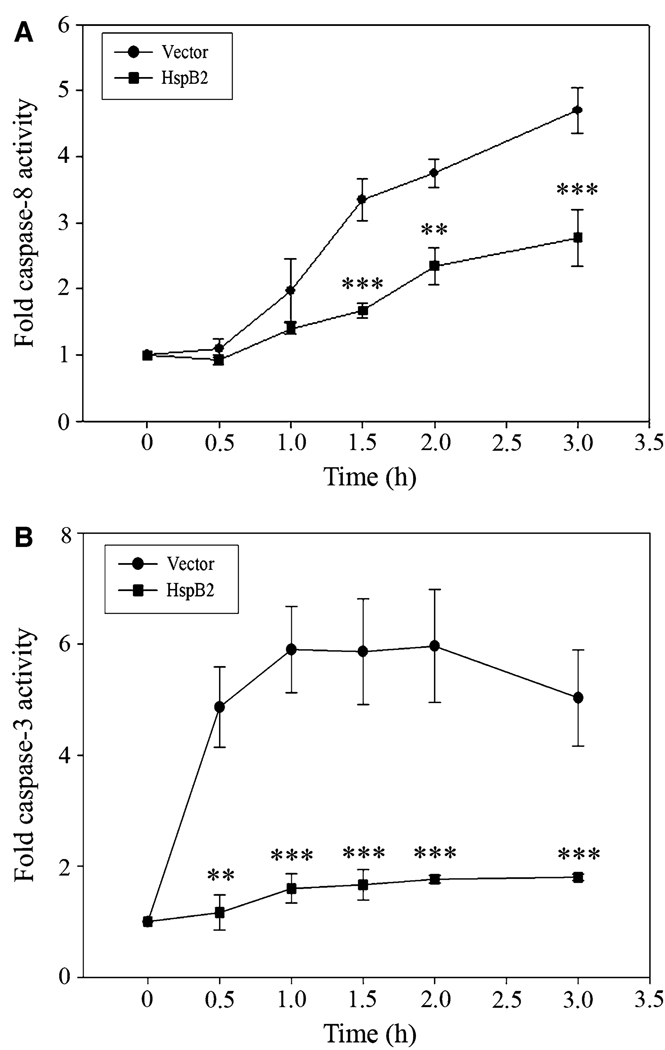Fig. 3.
HspB2 inhibits TRAIL-induced caspase-8 and caspase-3 activity. a MDA-MB-231 breast cancer cells stably expressing HspB2 or empty vector were treated with 500 ng/ml TRAIL for 0–3 h. Caspase-8-like activity was determined by incubating cell lysates with the fluorogenic caspase-8 substrate IETD-AFC. Fold caspase-8 activity was determined by normalizing fluorescence to t = 0 levels. b MDA-MB-231 breast cancer cells stably expressing HspB2 or empty vector were treated with 200 ng/ml TRAIL for 0–3 h. Caspase-3-like activity was determined by incubating cell lysates with the fluorogenic caspase-3 substrate DEVD-AFC. Fold caspase-3 activity was determined by normalizing fluorescence to t = 0 levels. In both a and b, the data represent the mean ± SEM of three independent experiments (**P < 0.01, ***P < 0.001 versus vector control at each time point)

